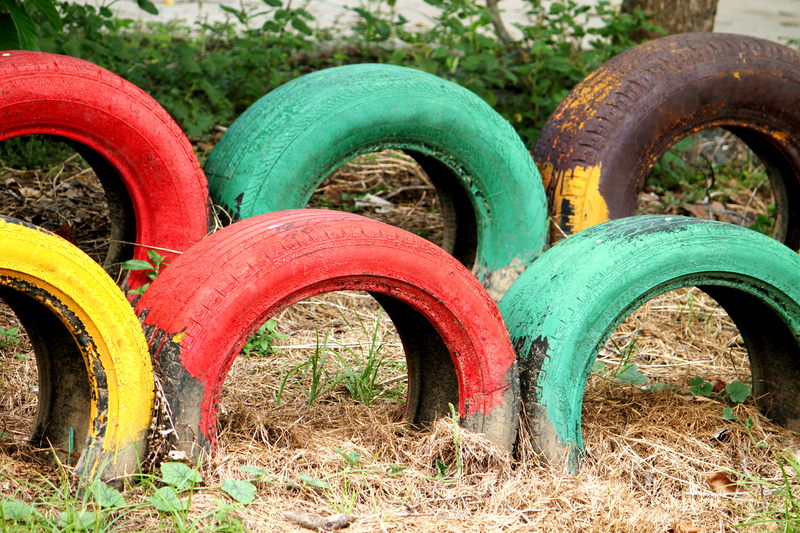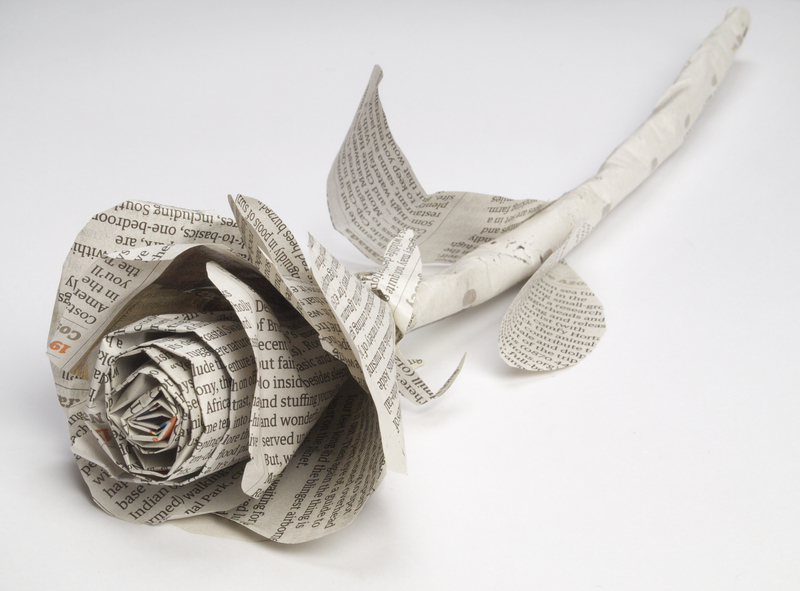Cardboard Disposal Hacks to Declutter and Help the Planet
Cardboard is everywhere, from shipping boxes to packaging for everyday items. As online shopping grows, so does the pile of cardboard cluttering our homes and offices. But did you know smart cardboard disposal hacks can not only streamline your space but also benefit the environment? In this comprehensive guide, discover how to properly get rid of cardboard, creatively reuse it, and make eco-friendly choices that contribute to a greener planet.
Why Proper Cardboard Disposal Matters
Cardboard is easy to overlook, but its impact is enormous. Each year, millions of tons end up in landfills, where it contributes to methane production as it decomposes. With smarter cardboard recycling and disposal methods, you can:
- Declutter your home or office efficiently
- Reduce landfill waste and promote sustainability
- Conserve resources by minimizing demand for new cardboard
- Support the circular economy by ensuring reused and recycled materials
- Influence friends and community with responsible habits

First Step: Organizing Your Cardboard for Easy Disposal
Break Down Boxes
Always start the process by breaking down your cardboard boxes. Flattening them saves storage space, makes recycling easier, and allows recycling bins to hold more. Use a box cutter or scissors for stubborn seams, and remove all tape and packaging materials when possible.
Sort and Stack
- Separate clean, dry cardboard from dirty or greasy ones (like pizza boxes).
- Stack similar sizes together - this helps with transport and maximizes bin space.
- Bundling loose cardboard with string or twine keeps pieces under control.
Check Local Guidelines
Every municipality has unique rules for cardboard disposal and recycling. Always check your local government's website or recycling center's guidelines for accepted types, bundling requirements, and collection days. Some accept all types (corrugated, chipboard, etc.), while others have restrictions.
Clever Cardboard Disposal Hacks to Try at Home
1. Curbside Recycling
Most communities offer curbside cardboard recycling services. Simply set out broken-down boxes on the scheduled pickup day. This is the easiest way to dispose of large quantities quickly and ensures your cardboard gets processed responsibly. *Always* avoid leaving boxes out in the rain--wet cardboard is harder to recycle and might end up as waste.
2. Drop-off Centers and Community Recycling
If curbside service isn't available, find local recycling drop-off centers. Supermarkets, community centers, and recycling depots are great options. They often have large bins designated for cardboard.
3. Upcycle: Creative Reuse Ideas for Cardboard
Before tossing your boxes, ask: Can this be repurposed? Try these fun and practical upcycling hacks:
- Storage bins: Decorate sturdy boxes for organizing closets, toys, or seasonal clothing.
- Gardening mulch: Use flattened cardboard as weed barriers in your garden beds.
- Composting: Shredded, plain cardboard (without glossy finishes) adds bulk and carbon to compost piles.
- Shipping protection: Reuse small pieces as padding when mailing delicate items.
- Kids' crafts: Cardboard is perfect for art projects, costume props, or homemade puzzles.
- Pet toys: Construct a cat scratching post or a play fort for small pets.
4. Donate or Give Away Cardboard
Environmental groups, schools, or local businesses may need boxes for projects or moving. Use neighborhood social media groups or apps like Nextdoor to offer free cardboard to those who can reuse it.
Cardboard Disposal Mistakes to Avoid
- Don't recycle soiled or greasy cardboard: Food-soaked cardboard (pizza boxes, takeout containers) can contaminate batches. Tear away clean sections to recycle and compost or trash the rest.
- Avoid plastic or wax-coated cardboard: These often aren't recyclable via standard programs.
- No wet cardboard: Always keep your recycling dry to maintain quality for the recycling process.
- Remove all tape and labels: These materials can clog up recycling machinery and lower cardboard value.
How Cardboard Recycling Helps the Environment
Proper cardboard recycling and reuse benefits the environment in several powerful ways:
- Saves trees: Recycling a ton of cardboard saves approximately 17 trees.
- Conserves water and energy: Making recycled cardboard uses 50% less water and energy than creating new products from raw materials.
- Reduces landfill waste: Cardboard makes up a large portion of municipal solid waste. Recycling or reusing reduces landfill space and prevents methane release.
- Creates jobs: The recycling industry supports thousands of green jobs worldwide.
Recycling Stats at a Glance
- Over 70% of cardboard is recycled annually in the United States--one of the most successful recycling programs!
- Each ton of recycled cardboard equals nearly 9 cubic yards of landfill space saved.
- If every household recycled just one box per week, the cumulative environmental impact would be enormous.
Smart Storage Tips for Cardboard Before Disposal
Keep It Clean and Dry
Store cardboard in a dry location, away from rain or moisture. Garages, basements, or sunrooms work well. If storing long-term, elevate stacks to avoid absorbing ground moisture.
Compress and Contain
- Use string, twine, or reusable straps to keep flattened boxes neat and easy to carry.
- For apartments or small spaces, designate a single bin or corner for accumulating clean, dry boxes until disposal day.
Eco-Friendly Options for Large Cardboard Loads
Haul-Away and Junk Removal Services
Got a mountain of boxes--maybe after a move or big home project? Eco-friendly junk removal companies often prioritize recycling and will ensure your cardboard doesn't end up in a landfill.
Bulk Recycling at Commercial Sites
Some municipalities have special "cardboard-only" recycling dumpsters at commercial sites, perfect for dropping off volume loads from businesses or events.
Community Cardboard Drives
Participate in community initiatives that collect large amounts of cardboard for special recycling drives or charity events. These often pop up around holidays or back-to-school seasons when packaging waste is highest.
Advanced Cardboard Disposal Hacks to Reduce Your Footprint
Try Zero-Waste Strategies
- Refuse Excess Packaging: Opt for companies or products with minimal or no cardboard packaging. Support brands using recyclable or biodegradable materials.
- Return Boxes: Some companies, especially moving and electronics businesses, accept box returns for reuse.
- Reusable Boxes: Store heavy-duty boxes for your own future use or lend to friends and family when needed.
Use Cardboard for Home DIY
Get creative with large sheets of clean cardboard:
- Protect floors during painting or moving.
- Layer as insulation behind drafty doors or windows.
- Cut custom organizers for drawers or cars.
- Use as templates for woodworking or crafts.
Composting Cardboard at Home
Shredded cardboard provides much-needed "brown" (carbon-rich) material for backyard compost piles. Combine with kitchen scraps and yard waste for balanced compost. Just be sure to avoid glossy or colored cardboard, which could contain inks or coatings.

Frequently Asked Questions About Cardboard Disposal
Can Wet Cardboard Still be Recycled?
Usually not. Wet cardboard can clog recycling machinery and lower recycled material quality. Always dry boxes before putting them out for pickup.
How to Dispose of Cardboard with Tape and Labels?
If possible, remove tape, labels, and any non-cardboard material. Small traces are acceptable in most curbside recycling, but excessive plastic or metal attachments can disrupt processing.
What Happens to My Recycled Cardboard?
Recycled cardboard is sorted and cleaned at recovery facilities, then pulped and processed to create new cardboard and paper products. This cycle reduces resource use and environmental impact.
Conclusion: Declutter Smarter and Help Our Planet
With the right cardboard disposal hacks, you can transform a messy pile of boxes into a positive environmental action. Whether recycling, upcycling, composting, or organizing drop-offs, your efforts reduce waste, save resources, and set an example for others. Next time you're faced with a growing box collection, remember these tips and make your cardboard count--for a clutter-free home and a healthier planet!
Still have questions on the best way to recycle or repurpose cardboard? Reach out to your local recycling center or environmental group for more specific advice based on your area's guidelines. Your actions today can help create a cleaner, greener tomorrow.